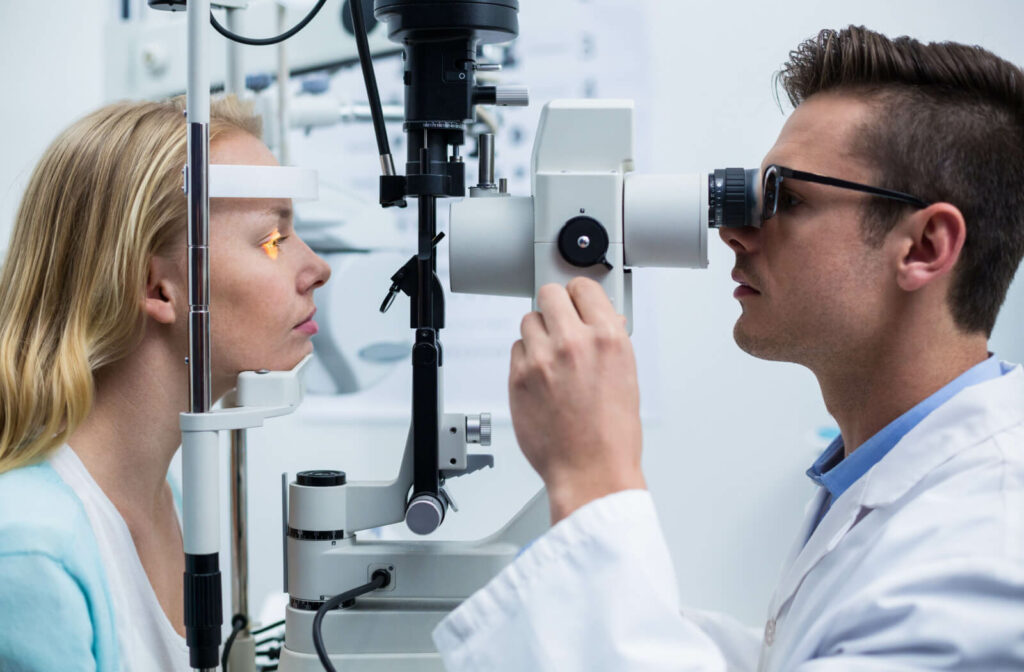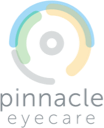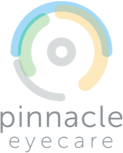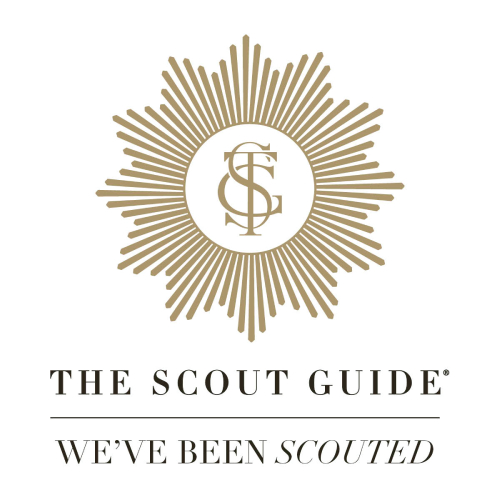If you’ve ever squinted to see your phone clearly or had blurry vision when trying to read the blackboard at school, you might have wondered what was going on. These are textbook signs of a refractive error like nearsightedness or farsightedness. But can you have both? Can you be nearsighted and farsighted at the same time?
These refractive errors are caused by a problem with the shape of your eye. You can’t have both at the same time in the same eye, but there is a situation where each eye may develop one of the conditions. This is called anisometropia.
What Is Nearsightedness?
Nearsightedness, also known as myopia, is an extremely common vision condition. It causes nearby objects to appear clearly, but get blurrier the further they get from the eye. This typically develops in childhood and continues progressing until around the age of 18-20.
It’s caused by a problem with the shape of the eye itself. When the eye is healthy, light bends through the clear front. It focuses on a single point on your retina, where the information gets sent through the optic nerve to the brain. It’s an incredibly complex system that works amazingly when the eye is shaped properly.
But when the eye is misshapen—even slightly—the light rays don’t focus where they need to. Instead, they’ll reach a different point inside the eye, and you’ll be dealing with blurry vision.
With myopia, the eye is longer than it is wide. This causes those light rays to refract just in front of the retina rather than on it. Nearby images appear clearly, but your vision gets worse when you’re further away from objects.
What Causes Nearsightedness?
So what exactly causes nearsightedness? That’s where things get a little bit tricky.
It’s typically caused by a combination of genetic and environmental factors. If you have a family history of myopia, you’re much more likely to develop it when you’re younger. And if you spend too much time engaged in activities that require close-up vision, you’re more likely to develop worse vision.
Myopia Control
Fortunately, our team at Pinnacle EyeCare can help with something called “myopia control.” This approach uses specialty contact lenses to slow how far the condition progresses.
We use MiSight contact lenses, a type of lens specifically designed to be child-friendly and extremely effective. They use special rings built into the lens to change how light enters the eye. They can slow myopia progression significantly!
What Is Farsightedness?
On the other hand, farsightedness—clinically known as hyperopia—is kind of like the opposite of myopia. When you have farsightedness, it causes nearby objects to be blurry while distant things are clearer.
Just like myopia, it’s caused by a problem with the shape of your eye. With farsightedness, the eye grows wider than it is long, causing light to focus behind the retina. This refractive error is also caused by a mix of environmental and genetic factors.
Can You Have Myopia & Hyperopia at the Same Time?
Because both nearsightedness and farsightedness are caused by problems with the shape of the eye, you can’t have both in the same eye at one time. Remember:
- Myopia occurs when the eye is longer than it is wide
- Hyperopia occurs when the eye is wider than it is long
Because of this, it won’t affect the same eye simultaneously.
However, there’s a catch—each condition can affect one eye at a time in a condition called anisometropia. So your left eye could be nearsighted while the right eye is farsighted. This can lead to the development of amblyopia—also known as lazy eye.
How Are Myopia & Hyperopia Treated?
There’s good news: both myopia and hyperopia are considered highly treatable. You’ll need to visit your optometrist for a comprehensive eye exam so they can determine what’s causing your vision problems.
Typically, treatment involves:
- Prescription glasses or contact lenses. These adjust how light enters each eye so it can reach the right point.
- Corrective surgery, where the shape of the eye’s natural lens is reshaped carefully so you can naturally refract the light properly.

What to Do if You Have Vision Problems
If you’re experiencing vision problems, it’s time to get help from an eye care professional. Our team at Pinnacle Eyecare can help. We can perform a comprehensive eye exam and help determine an appropriate type of treatment.
You don’t deserve to live with blurry vision. Whether it’s farsightedness, nearsightedness, or something else, we can properly diagnose your problem. So book an appointment with our team today, and take the first step towards a clearer future.






